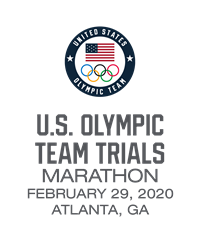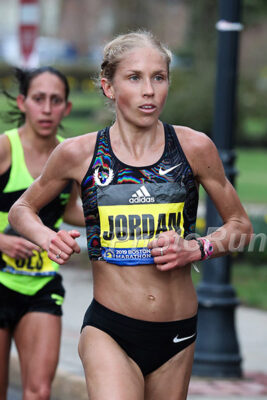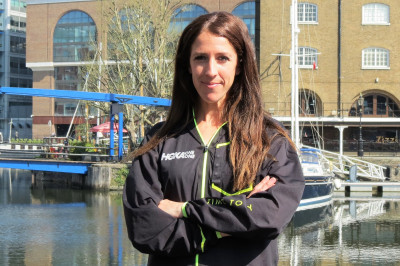The Road to Sapporo: Assessing the Women’s Field at the 2020 US Olympic Marathon Trials
By Jonathan Gault
November 11, 2019
The 2019 TCS New York City Marathon represented the final World Marathon Major of 2019. And while there a few marathons of interest remaining this year — Fukuoka, Honolulu, CIM — the eyes of the US marathon community have now shifted to the greatest 26.2-mile race on American soil: the US Olympic Marathon Trials, which will be held on February 29 in Atlanta.
The Trials function as a quadrennial checkup on the state of US long-distance running, the only race where all of America’s best marathoners come together on the same course on the same day. They are also cruelly, beautifully cutthroat: the top three across the line make the Olympic team. Everyone else? See you in four years.
In the 16 weeks between now and the Trials, we’re not going to learn much new information. Yes, there will be an injury withdrawal or two, and perhaps someone surprises with a fast half in Houston in January. But we have almost all of the data. So let’s dig into it.
Below, we’ve broken down the contenders for the 2020 US Olympic marathon squad into tiers (we did the same for the men here). Who’s looking good? Who needs to turn it around? Read on for the answers as we examine who’s on track to make it to Tokyo Sapporo next year.
The Women: A Wide-Open Battle With Little Certainty
The Big Six
Jordan Hasay, Emily Sisson, Des Linden, Amy Cragg, Molly Huddle, Sara Hall
Unlike the men’s side, there is no clear favorite in the women’s race at the Olympic Trials. Hasay and Cragg have both been brilliant in the marathons they’ve completed, but both carry injury concerns. Hasay has either DNF’d or withdrawn from three of her last four marathons, while Cragg has pulled out of Chicago in each of the past two years, hasn’t raced a marathon since February 2018 in Tokyo, and turns 36 in January. Between Hasay’s 2:20 at 2017 Chicago and Cragg’s bronze at the 2017 Worlds, they’re responsible for two of the greatest performances by American marathoners during this Olympic cycle. If we could get a guarantee that those versions of Hasay and Cragg would show up in Atlanta, both would be near-locks for the team. But given how the last two years have played out, there’s too much uncertainty to pencil them in right now.
The other women in this group have all been healthy during the past four years, but each is accompanied by other questions. For Sisson, it’s inexperience. She’s run just one marathon, and though it went great — she ran 2:23 in London in April to just miss Hasay’s US debut record — it was nothing like the course or race environment she’ll face in Atlanta. Still, her talent is tantalizing (she also ran 30:49 on the track and 67:30 in the half this year), and the way she ran London, negative-splitting after a cautious opening half, suggests there is plenty of room for improvement.
With American records at 10,000 and the half marathon, Huddle seemed destined for a brilliant marathon career. And while she’s run some solid ones, she has yet to produce a signature performance. Tellingly, she’s finished as the top American in just one of her four marathons — and even in that race (2016 NYC, when she was 3rd), one of the women who beat her (Sally Kipyego) is now a US citizen. This spring, she finished over three minutes behind Sisson in London. But if she can summon a performance similar to her run in NYC last year (when she finished 4th with an impressive 75:50/70:54 negative split), she has a great chance to make it to Sapporo.
As for Linden, the question isn’t about her performance, but whether she’ll run the Trials at all — she has yet to make a decision, but expect one in the coming weeks as she evaluates how her body feels following her 19th career marathon. Linden made each of the past two Olympic teams, and showed why in New York this fall, earning top American honors (6th overall) after running aggressively early and holding on late. However, even if Linden runs the Trials, it may not be enough to make the team: she finished 1:40 behind Hasay in Boston this year and 1:07 behind Huddle in New York last year. Linden has the highest floor of this group, but it could be her ceiling that determines her Olympic fate.
I debated whether to include Hall in this group and ultimately decided she belonged here based on her 2:22 in Berlin in September. Prior to this year, her pedigree didn’t rival that of the other women in tier 1, but that 2:22 was the fastest marathon by an American in 2019 and good for #6 on the all-time US list — faster than Sisson, Linden, and Huddle have ever run. She belongs.
Of course, Hall had the advantage of running on a fast day on a fast course that few Americans get the chance to tackle. And there are concerns. Chief among them: she has yet to prove she can get it done against America’s best. For most of her professional career, Hall has been good, not great, and though she has consistently improved as a marathoner, she wasn’t viewed as a serious contender at the Trials until her 2:22 in Berlin. The fact remains that she’s never beaten any of the other women in this group in a marathon (though part of that is due to Hall’s race selection). Hall is undeniably trending upward, even at age 36, but the Trials will be her biggest test yet.
Chance of making Olympic team: Hasay: 50%; Sisson: 40%; Cragg: 35%; Huddle: 35%; Linden: 30%; Hall: 25%
Just One Tier Down
Kellyn Taylor, Sally Kipyego, Emma Bates
You can make an argument that Taylor and Kipyego should be in the tier above, and it wouldn’t be a shock to see any of the three make the Olympic team. But if the purpose of this exercise is to make sense of where things stand three months out from the Trials, we need to draw a dividing line somewhere. Otherwise, why have tiers at all?
Taylor has run some terrific races over the past few years, highlighted by her 2:24 win at Grandma’s Marathon in 2018 and her third-place finish at USAs in the 10,000 this year. But, like Hall, Taylor has yet to beat any of the women from the top group. And unlike Hall, she doesn’t have an eye-popping personal best. The good news for Taylor is that she was only six seconds back of Linden in New York on Sunday; the bad news is that Linden won’t be dying as hard over the final miles in Atlanta.
Kipyego has credentials few Americans can match. She has a pair of silvers at Worlds (2011) and the Olympics (2012) in the 10,000 and was the runner-up at the 2016 NYC Marathon. But since then, she’s finished just one marathon, and in that race (Berlin 2019), she was almost three minutes behind Hall (2:25:10 vs 2:22:16). Kipyego missed 2017 to give birth and barely raced in 2018, but she’s made good progress in 2019, going from a 72:12 half in Houston in January to a 2:25:10 full in Berlin in September. There’s no doubting her talent, and she should be better in Atlanta than she was in Berlin. The question is, how much better?
Bates has run two marathons in her career, and both were outstanding: a dominant debut win at CIM last year in 2:28, followed by a big PR of 2:25 to place 4th in Chicago in October. That run showed her effort at CIM was no fluke, but she’ll have to make another jump if she’s to contend at the Trials.
Chance of making Olympic team: 20% each
Longer Shots
Aliphine Tuliamuk, Stephanie Bruce, Laura Thweatt
The three women in this group are all quality runners, but it would be a surprise to see any of them make the Olympic team. Tuliamuk won national titles in the half and 25k last year but that success has yet to fully translate to the marathon. She was 12th in NYC this year, and her 2:26 pb (on a flat, fast course in Rotterdam earlier this year) isn’t going to strike fear in anyone. Bruce is similar to Hall in that she races a lot and excels over a number of surfaces, but she has a pb of just 2:27 in the marathon and finished well back of Bates in Chicago last month. Thweatt may have the highest ceiling of this trio as she was 6th in London in 2017 in 2:25, but she’s missed significant time with injuries over the past few years and could only manage 2:29 at Chicago. She may not have enough time to turn things around before Atlanta.
Chance of making Olympic team: Tuliamuk: 10%; Thweatt: 9%; Bruce: 5%
Everyone Else
I feel confident in saying that no one outside of the 12 women named above has a realistic shot to make the 2020 Olympic team. Roberta Groner (6th at Worlds, 2:29 pb) is a nice story, but she’s not one of the three best marathoners in the United States. Lindsay Flanagan (2:28 pb in Chicago) and surprise Grandma’s winner Nell Rojas (2:28 pb) have yet to show anything that would indicate they can beat the likes of Hasay, Linden, Huddle, etc. Gwen Jorgensen had heel surgery in May, and if Galen Rupp‘s timeline is any indication — they shared the same malady, Haglund’s deformity — her Trials chances are extinguished. Allie Kieffer has been hurt and dropped out of NYC.
Chance of making Olympic team: 1% (everyone combined)
***
The Bottom Line
If everyone were fully healthy, picking the team would still be difficult. Hasay would have to be on it, and it would be hard to argue against Cragg after her performances at the 2016 Trials, 2017 Worlds, and 2018 Tokyo (2:21). I’d lean toward Sisson for the third spot, but there are compelling cases to be made for Linden, Hall, and Huddle.
But given the uncertainties about the health of Cragg and Hasay — who, let’s not forget, just lost her longtime coach and mentor Alberto Salazar after he was banned for anti-doping violations — they can’t be viewed as locks for the team. It’s also worth noting that, as the two Nike-sponsored women in the top tier, they’ll have access to the Vaporfly NEXT% shoes — or perhaps an even more advanced version. As uncomfortable as the concept seems, it’s possible the shoes are the difference — because on paper, this looks as if it will be a tightly-contested race.
But enough on the shoes. This is a race overflowing with storylines — young studs like Hasay and Sisson trying to usher in a changing of the guard, veterans like Hall and Taylor chasing their first Olympic team, aging stars like Linden and Cragg trying to hold on for one more rodeo. Above all, there’s unpredictability. At least three of the very accomplished women from the top tier won’t be going to Sapporo, and we don’t know which ones. How exciting is that?
Be a fan and tell us your views on the race on our messageaboard. MB: Who are the favorites for the 2020 US Olympic Marathon Trials? We tell you here.



